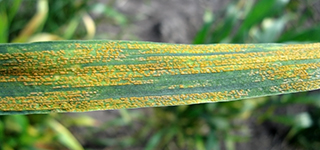During the current Rabi season, scientists of Punjab Agricultural University (PAU), Ludhiana, are surveying wheat crop as per the past practice for the early detection of yellow rust in the sub- mountainous districts of the state.
The initial foci of infection of yellow rust had been sprayed upon under the supervision of experts and the situation was under control, he said. Since the disease was air borne and favourable weather conditions for the infection, development and spread of the disease were prevailing, some secondary infection may occur in the adjoining fields of the areas, he cautioned.
To avoid yield loss due to yellow rust and check its further spread to other districts of Punjab, there was a crucial need to monitor wheat fields in the sub-mountainous areas of Punjab, he added.
“If the disease appears in fields, spray the infected areas with recommended fungicides, such as Nativo 120g or Caviet 200g or Tilt/Shine/Bumper/Stilt/Compass/Markzole 200 ml in 200 litres of water. This will prevent the spread of disease in other areas,” he said.
Meanwhile, Plant Protection Officer of Moga Jaswinder Brar said there was no sign of yellow rust on wheat plants in Moga and its adjoining districts and the crop was healthy with initial indications of a good yield.
This news has not been edited by Apni Kheti staff but has been published by various news feeds
Source: Tribune India

